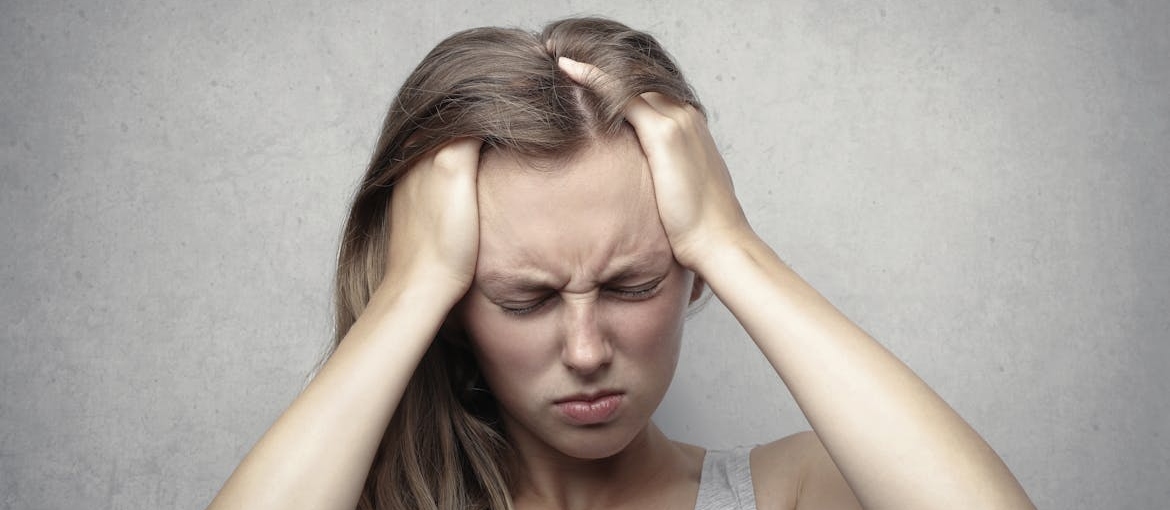Trazodone can help with sleep and anxiety, but stopping it isn’t always simple. If you’re dealing with trazodone withdrawal, you’re not alone. Many people feel off, sick, or anxious when they stop taking it, especially without support. You might feel tired but unable to sleep, or your moods might swing. These symptoms can hit fast or creep up slowly. It’s not just in your head—your body is adjusting, and that takes time. Some people can manage on their own, but others need extra help. If things feel too heavy, it’s okay to reach out. Some rehabs in WV can help with withdrawal and mental health support. You deserve to feel better, and there are safe ways to get through this. Keep reading to learn what to expect and what helps.
What Is Trazodone and Why Is It Prescribed?
Trazodone is an antidepressant often used to treat depression and sleep problems. Doctors may prescribe it for anxiety, PTSD, or off-label for insomnia. It works by changing how serotonin moves in the brain, which can improve mood and sleep. Many people take it long-term without trouble, but others build a tolerance or want to stop. That’s when withdrawal can start.

While it’s not a controlled substance, it still affects your nervous system. That’s why medical support matters if you plan to taper. Some people benefit from outpatient care, while others need more. A rehab center Clarksburg WV residents trust may offer help with medication planning, taper schedules, and therapy support. If trazodone helped you in the past but now feels hard to stop, you’re not alone—and you’re not stuck.
What Causes Trazodone Withdrawal?
Trazodone changes brain chemicals. Over time, your body adjusts to that shift. When the drug leaves your system, your brain has to re-balance. That’s when withdrawal symptoms begin. Stopping suddenly or tapering too fast makes it worse. Your dose, how long you’ve been taking it, and your overall health all play a role. People with past trauma or anxiety may feel symptoms more deeply. Drug interactions can add risk too, especially when combining meds. One example is the risks of mixing Lexapro and trazodone, which can affect serotonin levels and withdrawal intensity.
- Stopping cold turkey: Sudden changes shock your system
- High doses: More serotonin disruption
- Long-term use: Your brain adapts more deeply
- Drug interactions: Other meds can increase withdrawal effects
- Mental health issues: Anxiety or PTSD can resurface
Common Trazodone Withdrawal Symptoms
Trazodone withdrawal can affect your body and mind. Symptoms vary from person to person. Some feel shaky or tired. Others feel emotionally off. It often starts with sleep trouble, then adds physical discomfort. Symptoms usually fade, but they can linger without the right support. People with anxiety or depression may feel worse during this time. This is why some people benefit from dual diagnosis treatment West Virginia programs that treat both mental health and withdrawal symptoms.
- Headaches and nausea: Common early signs
- Anxiety and panic: Can grow if untreated
- Fatigue: Energy levels may drop fast
- Mood swings: Irritability and sadness are common
- Sleep problems: Vivid dreams or insomnia
- Upset stomach: Digestive issues like cramps or diarrhea may appear
- Dizziness or brain fog: Slower reaction times
- Sweating or chills: Body temperature may fluctuate

How Long Does Trazodone Withdrawal Last?
Trazodone withdrawal hits everyone a little differently. For some, symptoms show up fast. Others don’t notice much for a few days. You might feel off for a week—or several. Knowing what to expect helps you stay calm and plan for support. Let’s break down how long trazodone withdrawals last, what makes them worse or easier, and when it’s time to get extra help.
Timeline: From the First 24 Hours to Several Weeks
Most people start feeling trazodone withdrawal symptoms within one to three days. Symptoms often peak within a week, then slowly fade. The total process may take two to four weeks, though some feel aftershocks even longer. Below is a basic timeline to help you track what’s normal:
- 0–24 Hours: Trouble sleeping, irritability, or mood swings may begin
- Days 2–5: Anxiety, nausea, and headaches increase
- Week 2: Fatigue, brain fog, and low mood may linger
- Week 3–4: Symptoms slowly fade but may return briefly
- After one month: Most feel better, though some symptoms may last longer
- Two months and beyond: Rare cases may still feel mild mood shifts or sleep issues
Factors That Affect the Duration of Symptoms
Several things can affect how long trazodone withdrawals last. Your dosage, how long you’ve taken the drug, and whether you quit suddenly all play a role. People on high doses or who stopped cold turkey usually face longer or more intense symptoms. Health history matters too. If you have depression or anxiety, those issues might flare up during withdrawal. Age, metabolism, and how well you sleep also matter. Stress, poor diet, and dehydration can make things worse.
Ask yourself: does trazodone need to be weaned off? Yes—it usually should be. Tapering helps your body adjust. That’s why working with a doctor matters. If you’re wondering can you get sick from stopping trazodone, the answer is yes—especially if it’s sudden. Everyone’s different, but patterns show up. Track your symptoms. It helps you notice improvement, even when things feel slow.

When to Seek Help for Prolonged Withdrawal Symptoms
If you’re still feeling rough after three or four weeks, it may be time to get help. Some symptoms, like mood swings or sleep trouble, should fade. If they don’t, there may be more going on. Mental health issues can resurface during withdrawal, and that can make it hard to tell what’s normal. If you’re asking how long does it take to withdraw from trazodone and keep feeling stuck, don’t wait.
Talk to a doctor or therapist. Some people develop severe depression or physical problems that don’t get better alone. If things feel worse over time, you may need help fast. Options like therapy or a short stay at a barbiturates rehab or mental health center can help stabilize you. Withdrawal doesn’t last forever, but it can turn into something more serious. There’s no shame in needing support.
The Role of Therapy and Support in Recovery’
Trazodone withdrawal is physical, but emotional support makes a big difference. You might feel unmotivated, tired, or overwhelmed—therapy helps. Talking through what you’re feeling can ease symptoms and help you feel more stable. Support groups, online forums, and in-person sessions can give you a place to vent or ask questions. It’s also where you build long-term recovery habits.
One approach that works well is a CBT treatment plan for substance abuse. CBT helps people manage anxiety, spot triggers, and avoid old habits. Even a few sessions can help you manage emotions during withdrawal. Some people also benefit from trauma-informed therapy, especially if trazodone was used to treat PTSD. Therapy doesn’t have to last forever—but it can give you tools to get through the hardest days and feel more like yourself again.

Тreatment Options for Severe Trazodone Withdrawal
Some people get through trazodone withdrawal at home with rest, hydration, and support. Others feel stuck, scared, or too sick to manage alone. If your symptoms drag on or get worse, treatment can help. You have options—some short-term, some more structured. Below, we’ll go over inpatient detox, outpatient care, and how to find the right place to get better.
Inpatient Detox for Trazodone Dependency
If trazodone withdrawal side effects feel severe, a short stay in detox may help. Inpatient detox gives you 24/7 support, medication if needed, and a quiet space to rest. You won’t need to manage symptoms alone. This type of care is helpful if you’ve had panic attacks, long-term insomnia, or thoughts that scare you. People with other mental health issues may also benefit. Many centers offer medical monitoring to make sure you stay safe.
It’s also where doctors watch for rare problems, like serotonin syndrome. Ask yourself: does trazodone cause serotonin syndrome? It can—but only in rare cases. Still, it’s good to be watched if symptoms feel intense. Some long term drug rehab WV programs include detox as part of treatment. If you feel overwhelmed, inpatient care may give you the reset you need.
Outpatient Support and Medication Management
Not everyone needs to stay overnight. If symptoms are steady but manageable, outpatient care may be enough. You’ll still work with doctors or therapists, but you’ll sleep at home. This works well if you have a strong support system or just need help adjusting your taper. Ask about meds that reduce trazodone withdrawal side effects like nausea or anxiety. Some clinics help with this weekly or even daily.

Insurance often helps cover this care, which can lower the stress. You may wonder, does Blue Cross Blue Shield drug rehab coverage include this? In many cases, yes. Check your plan. Therapy helps, too—especially if you’re struggling with emotions or can’t sleep. A doctor can adjust your plan as needed. You don’t have to figure it all out on your own. Even one appointment can help guide you.
How to Choose the Right Treatment Facility
Finding a place that feels safe and helpful makes a big difference. Ask questions and look at what each center provides. Here’s what to check:
- Medical support: Do they monitor vital signs and treat symptoms?
- Mental health help: Can you meet with a therapist or psychiatrist?
- Withdrawal experience: Have they helped others through trazodone withdrawals before?
- Licensing: Is the facility licensed and fully staffed?
- Flexibility: Do they offer inpatient and outpatient programs?
- Insurance help: Will they walk you through costs and coverage?
Preventing Relapse After Trazodone Withdrawal
The hardest part of withdrawal isn’t always the symptoms. It’s what comes after. Some people stop trazodone and feel better—then anxiety or depression returns. That’s why relapse planning matters. Think ahead. What helped you cope before? What made things worse? Writing these down helps. If you’ve felt withdrawal from trazodone side effects, you know how rough they can get.

Track your trazadone withdrawal symptoms so you notice early signs of trouble. Some people relapse not because of cravings, but because of stress, loneliness, or poor sleep. Support systems help with that. Long-term therapy, support groups, and regular check-ins can keep you steady. You’ve already handled trazadone withdrawals—don’t wait for things to crash before reaching out again. If you’re wondering how long is the washout period for trazodone, it’s usually a few weeks, but healing continues beyond that.
Getting Through Trazodone Withdrawal One Step at a Time
Trazodone withdrawal can feel overwhelming, especially if you don’t know what’s normal or how long it will last. You might feel shaky, irritable, or just off. That doesn’t mean you’re doing something wrong. It means your body is adjusting. Some people get through it with rest, hydration, and support from loved ones. Others need more structure, like therapy or medical help. There’s no one way to handle it, and that’s okay. What matters is finding what works for you. Talk to someone if the symptoms don’t get better or start to affect your daily life. You don’t have to push through it alone. Trazodone withdrawal can pass, and there’s help if it gets too hard. Getting better is possible, one step at a time. You deserve support, and it’s okay to ask for it.



